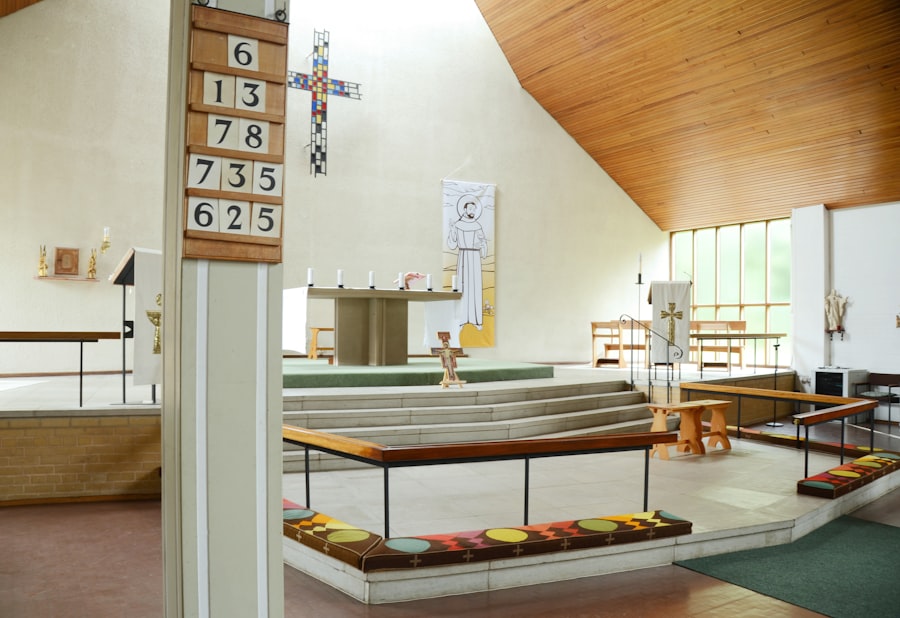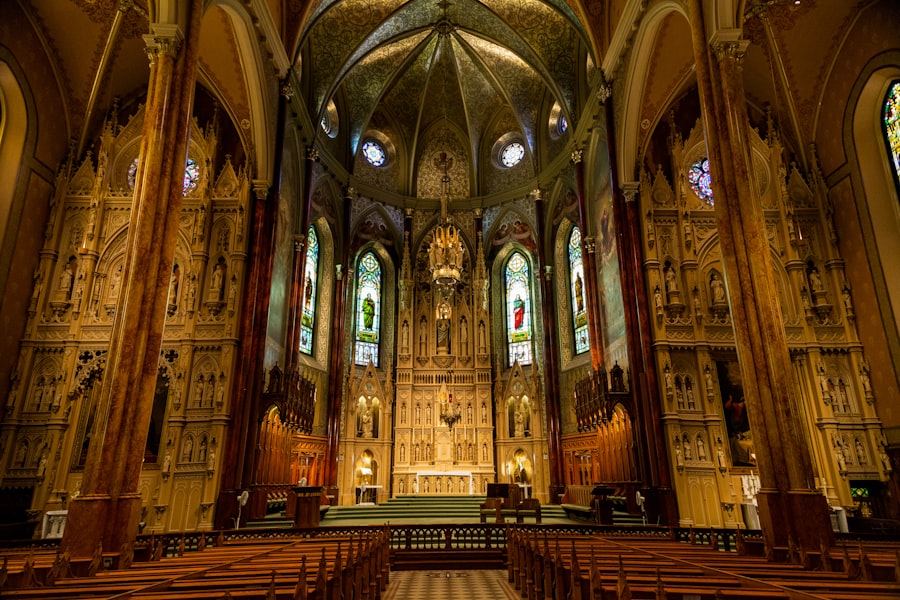Download links
How to install Swertres Manila Cathedral: A Historic Landmark APK?
1. Tap the downloaded Swertres Manila Cathedral: A Historic Landmark APK file.
2. Touch install.
3. Follow the steps on the screen.
Description
The Manila Cathedral, officially known as the Cathedral-Basilica of the Immaculate Conception, has a rich and storied history that reflects the tumultuous past of the Philippines. Its origins can be traced back to 1581 when the first church was constructed on the site, serving as the seat of the Archdiocese of Manila. This initial structure was made of bamboo and nipa palm, a humble beginning that belied the cathedral’s future significance.
Over the centuries, the cathedral has undergone numerous reconstructions and renovations, primarily due to natural disasters and conflicts that have plagued the region. The original church was destroyed by fire in 1583, leading to its first reconstruction, which was completed in 1592. The cathedral has been rebuilt several times since then, with each iteration reflecting the architectural styles and materials available at the time.
The most significant reconstruction occurred after World War II when the cathedral was heavily damaged during the liberation of Manila in 1945. The post-war restoration, completed in 1958, was led by renowned architect Fernando Ocampo, who sought to preserve the historical essence of the structure while incorporating modern elements. This blend of old and new has made the Manila Cathedral a symbol of resilience and continuity in Filipino history, standing as a testament to the enduring faith of its people.
Key Takeaways
- The Manila Cathedral has a rich history dating back to the Spanish colonial period, with several reconstructions due to natural disasters and war.
- The architectural features of Manila Cathedral showcase a blend of different styles, including Romanesque, Renaissance, and Baroque influences.
- Swertres Manila Cathedral holds significant cultural importance in Filipino society, with many people visiting to seek blessings and guidance.
- Manila Cathedral has been the venue for several notable events and celebrations, including papal visits and important religious ceremonies.
- Efforts to restore and preserve Manila Cathedral have been ongoing, with the latest restoration completed in 2014, ensuring its continued significance for future generations.
Architectural Features of Manila Cathedral
The architectural design of Manila Cathedral is a harmonious blend of Romanesque and Neo-Gothic styles, characterized by its grand façade and intricate details. The cathedral’s exterior is adorned with a series of impressive buttresses that not only provide structural support but also enhance its aesthetic appeal. The façade features a prominent rose window, which serves as a focal point and allows natural light to filter into the interior, creating a serene atmosphere for worshippers.
The use of local materials, such as adobe bricks and coral stone, reflects the cultural heritage of the Philippines while also ensuring durability against the elements. Inside, the cathedral boasts a stunning array of religious artworks and sculptures that contribute to its spiritual ambiance. The high altar is particularly noteworthy, featuring an elaborate retablo that showcases intricate carvings and gilded details.
The ceiling is adorned with beautiful frescoes that depict various biblical scenes, further enhancing the visual splendor of the space. Additionally, the cathedral houses several chapels dedicated to different saints, each with its own unique design and artistic elements.
Significance of Swertres Manila Cathedral in Filipino Culture

The Manila Cathedral holds a special place in Filipino culture, serving not only as a religious institution but also as a cultural landmark that embodies the nation’s identity. It is often regarded as a symbol of hope and resilience, particularly in times of adversity. The cathedral’s role extends beyond its religious functions; it has become a gathering place for significant national events and celebrations, reinforcing its status as a cultural hub.
For many Filipinos, attending mass at the cathedral is not just a spiritual obligation but also a way to connect with their heritage and community. Moreover, the Manila Cathedral is intricately linked to various Filipino traditions and customs. For instance, it plays a central role during major religious festivities such as Christmas and Holy Week, where thousands of devotees flock to its doors to participate in solemn masses and processions.
The cathedral’s involvement in these events fosters a sense of unity among Filipinos, transcending regional and social differences. Additionally, it serves as a backdrop for important life events such as weddings and baptisms, further solidifying its significance in personal and communal narratives.
Notable Events and Celebrations at Manila Cathedral
| Event/Celebration | Date | Description |
|---|---|---|
| Easter Sunday | April 4, 2021 | Celebration of the resurrection of Jesus Christ |
| Christmas Eve Mass | December 24, 2021 | Special mass to celebrate the birth of Jesus Christ |
| Feast of the Black Nazarene | January 9, 2022 | Annual procession and mass in honor of the Black Nazarene |
| Wedding Ceremonies | Various dates | Hosts numerous wedding ceremonies throughout the year |
Throughout its history, Manila Cathedral has been the site of numerous notable events that have shaped both religious and national identity in the Philippines. One of the most significant occasions is the annual Simbang Gabi, a nine-day series of dawn masses leading up to Christmas. This tradition draws thousands of worshippers who gather at the cathedral to celebrate the anticipation of Christ’s birth.
The atmosphere during these masses is filled with joy and reverence, as families come together to partake in this cherished Filipino custom. Another important event is the Feast of the Immaculate Conception, celebrated on December 8th each year. This feast day holds particular significance for the cathedral as it is dedicated to the Immaculate Conception of Mary, its patroness.
The celebration includes a solemn mass attended by clergy and laypeople alike, often featuring special performances and cultural presentations that highlight Filipino artistry and devotion. Such events not only reinforce religious beliefs but also serve as opportunities for community bonding and cultural expression.
Restoration and Preservation Efforts of Manila Cathedral
The preservation of Manila Cathedral has been an ongoing endeavor, reflecting both respect for its historical significance and recognition of its architectural value. Following its destruction during World War II, extensive restoration efforts were initiated to restore the cathedral to its former glory. These efforts were not merely cosmetic; they involved careful research into historical documents and photographs to ensure that the reconstruction adhered closely to the original design while incorporating modern safety standards.
In recent years, additional restoration projects have focused on maintaining the structural integrity of the building while enhancing its aesthetic features.
The Archdiocese of Manila has also engaged with conservation experts to implement best practices in heritage preservation, ensuring that future generations can appreciate this architectural gem.
These efforts underscore a commitment not only to preserving a physical structure but also to safeguarding an essential part of Filipino cultural heritage.
Visiting Manila Cathedral: Tips and Recommendations

For those planning to visit Manila Cathedral, there are several tips and recommendations that can enhance the experience. First and foremost, it is advisable to check the mass schedule ahead of time if you wish to attend a service. The cathedral often hosts multiple masses throughout the week, with special services during religious holidays that attract larger crowds.
Arriving early can provide an opportunity to find a good seat and fully immerse oneself in the atmosphere. Visitors should also take time to explore the surrounding area, which is rich in historical significance. Nearby attractions include Fort Santiago and Rizal Park, both of which offer insights into Philippine history and culture.
Additionally, photography enthusiasts will find ample opportunities to capture stunning images of both the cathedral’s exterior and interior details; however, it is essential to be respectful during services by refraining from using flash photography. Lastly, engaging with local guides can provide deeper insights into the cathedral’s history and significance. Many guides offer tours that delve into not only architectural features but also stories about notable events that have taken place within its walls.
This added context can enrich your visit, making it more than just a sightseeing trip but rather an exploration of a vital piece of Filipino heritage.
If you are interested in exploring more about technology and communication, you may want to check out the article on Azar Video Chat y Mensajero. This app allows users to connect with others through video chat and messaging, making it a convenient way to stay in touch with friends and family. The article discusses the features of the app and how it can enhance communication in today’s digital age. You can read more about it here.
FAQs
What is Swertres?
Swertres is a popular numbers game in the Philippines, similar to the game of “3-digit” or “Pick 3” in other countries. Players choose a three-digit number from 000 to 999 and can win prizes based on different combinations and permutations of their chosen number.
What is the Manila Cathedral?
The Manila Cathedral, also known as the Metropolitan Cathedral of the Immaculate Conception, is a Roman Catholic basilica located in the Intramuros district of Manila, Philippines. It is the premier church of the Philippines and is dedicated to the Blessed Virgin Mary as Our Lady of the Immaculate Conception, the Principal Patroness of the Philippines.
What is the connection between Swertres and the Manila Cathedral?
There is no direct connection between Swertres and the Manila Cathedral. The two are unrelated topics and do not have any inherent relationship to each other.
Is Swertres legal in the Philippines?
Yes, Swertres is a legal numbers game in the Philippines and is regulated by the Philippine Charity Sweepstakes Office (PCSO), a government-owned and controlled corporation that raises and provides funds for health programs, medical assistance, and charities.
Is the Manila Cathedral open to the public?
Yes, the Manila Cathedral is open to the public for worship, prayer, and visitation. It is a popular tourist and pilgrimage site in Manila and welcomes visitors from all over the world.





